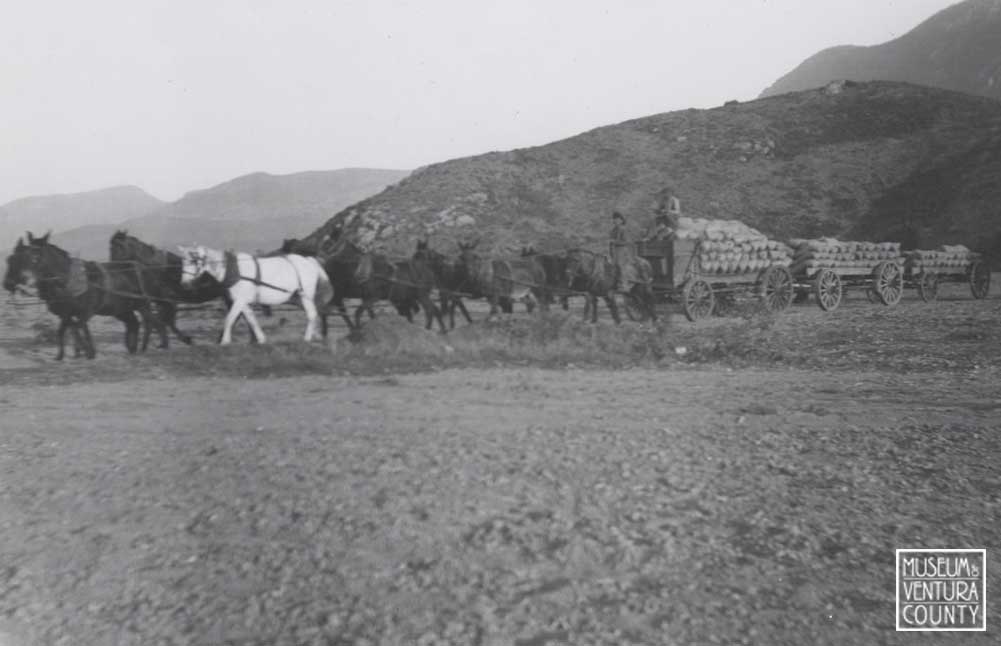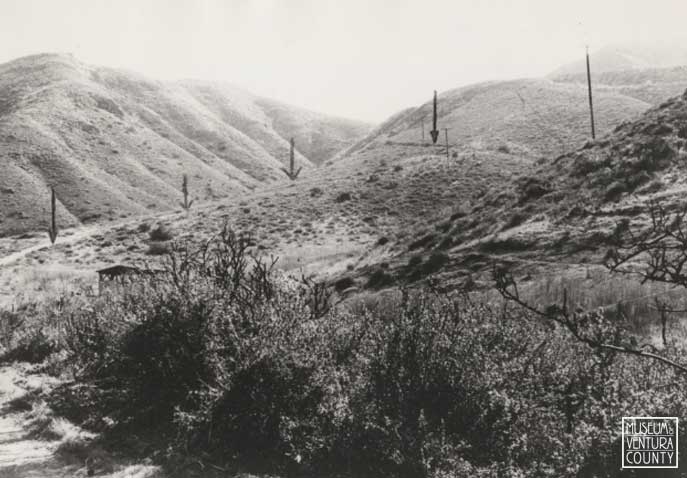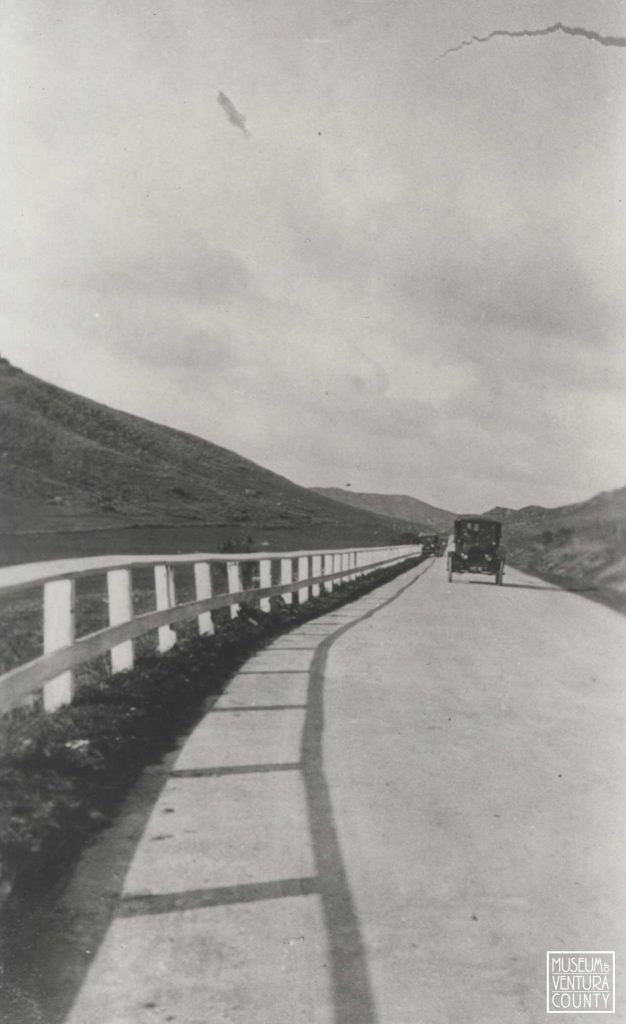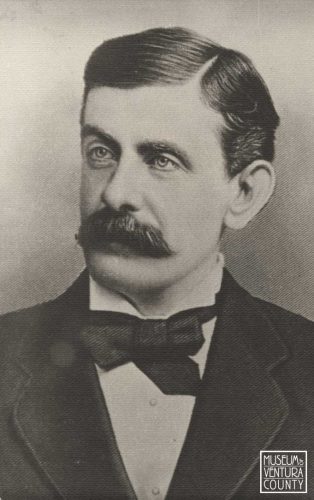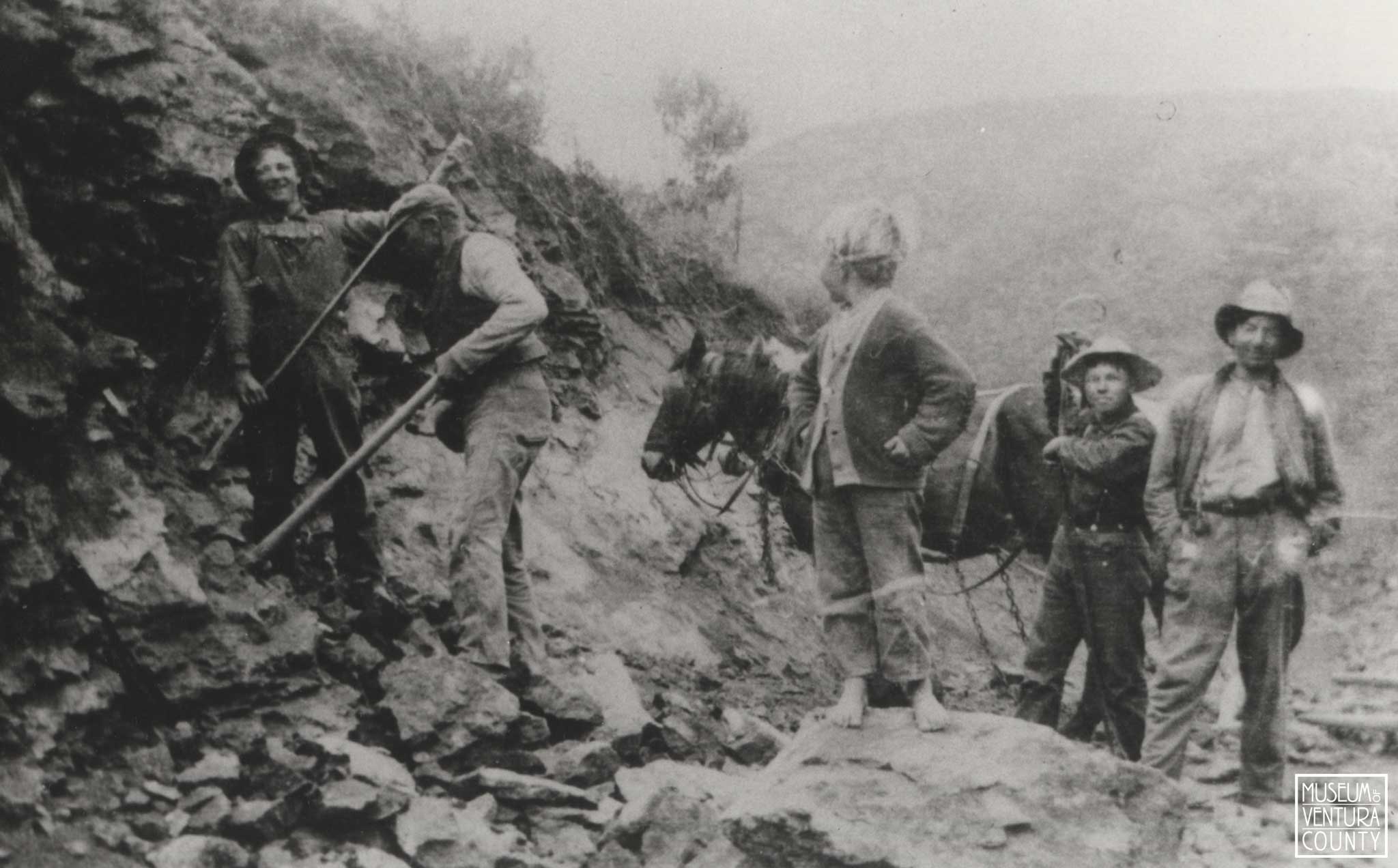by Library Staff
Three grades still in use today, the Conejo Grade, the Dennison Grade and the Norwegian Grade, played an important role in the growth of Ventura County and opened up development of the Conejo and Simi Valleys.
People needed a safe way to move their products to markets and they wanted contact with their neighbors. Prior to the construction of the grades, between 1871 and 1911, the elevation difference was a physical and psychological barrier that divided western and eastern Ventura County for many years.
The Grade That Almost Wasn’t
The Conejo Grade is believed to be where the Chumash Indians first met Spanish explorers in 1776. In 1873, Ventura County surveyed the grade and construction began on what would be the first Conejo Grade Road. Halfway through the construction project, the contractor who had been awarded the job went bankrupt, leaving a half-built road and no money to finish the project. The people of Western Ventura County raised the needed money through private donations and the grade was completed before the end of the year. One year after the completion of the first grade, the population of the Oxnard plain more than doubled to 11,000 people.
Navigating the grade was a wild ride for anyone who had the courage to attempt it. Typical practice for traveling down the grade required the traveler to stop at the top, lock the wagon wheels with a chain, tie a big limb from a tree on the back of the wagon, then give it a push, jump on and slide down the hill! When going up the grade before 1902, passengers had to get out and walk up the steep places to lighten the load, sometimes carrying rocks to put under the rear wheels of the wagons to stop the wagon from rolling backward when the horses got tired and needed to rest.
The grade was first paved in 1902 as two lanes. While this was an improvement over the original dirt road, the narrow roadway still had 49 sharp turns, some “U” shaped, an extremely steep 12% grade, no guard rails and huge drop-offs.
There have been numerous (too many to count) instances where wagons, cars and trucks have gone off the grade. By 1937 the grade had three lanes, it then grew to six in 1954 and eight in 2000.
Blame It On The Bear
The Dennison Grade is named after Henry Jackson Dennison, the patriarch of one of Ojai’s earliest pioneer families and the first school teacher in Ojai in 1869. There was no road or trail between Lower and Upper Ojai in 1865.
In 1866, when Thomas Bard was preparing to drill for oil in Upper Ojai, he constructed a road to get his machinery to the drilling site. The new road had an extremely steep grade requiring the use of block-and-tackle to skid the machinery up the hill. The steep grade is blamed on a bear. When Bard was laying out the route, a bear frightened the mule he was riding. The mule tossed Bard off and he was seriously injured. In his absence, the road was graded by his crew. When he returned, he found he’d laid out the road incorrectly; it was too steep. For years this flawed grade was used and according to a 1904 newspaper account, “cussed by all who traveled it.”
As a great deal of braking was necessary on the steep grade, teamsters would run one rear wagon wheel into an iron shoe that was attached to the bed of the wagon. While it was an effective brake, it gouged a deep rut in the dirt road and the dust would be almost intolerable. And to make things worse, the heat generated by the friction could cause sparks to fly, starting fires in the dry grass.
In 1924 the Dennison family donated 34 acres known today as Dennison Park. Travelers would rest on the Dennison property at the top of the grade on their trip between Ojai and Santa Paula.
Norwegian Families Build a Grade
In 1890 Nils Olsen, George Hanson, Ole Nelson, Lars Pedersen and Ole Anderson purchased 650 acres, founding the Norwegian Colony located at present day California Lutheran University. In the early 1900s, the original, unpaved Norwegian Grade was treacherous. The Norwegian farmers needed a safer route to move their bales of hay and sacks of grain to market.
Much of the construction of the grade was done by hand. Workers used star drills and sledge hammers to pound holes in the very hard volcanic rock. The dynamite was inserted into the holes, fuses were lit and everyone ran for cover. Rocks and dirt were moved using mules and horse-drawn earth-moving machines called Fresno Scrapers.
In 1909, with a $60 donation from Ventura County to purchase dynamite, members of the community blasted the hillside from Olsen’s property 1 ½ miles down to Santa Rosa Road. The grade was finished in 1911. Construction took almost three years because work on the grade was only done in the winter and early spring months. Planting, baling and harvesting took precedence during the summer and fall.
Until the construction of the 23 Freeway, the Norwegian Grade was the most direct route between Moorpark and Thousand Oaks for automobile and truck traffic.
Make History!
Support The Museum of Ventura County!
Membership
Join the Museum and you, your family, and guests will enjoy all the special benefits that make being a member of the Museum of Ventura County so worthwhile.
Support
Your donation will help support our online initiatives, keep exhibitions open and evolving, protect collections, and support education programs.

